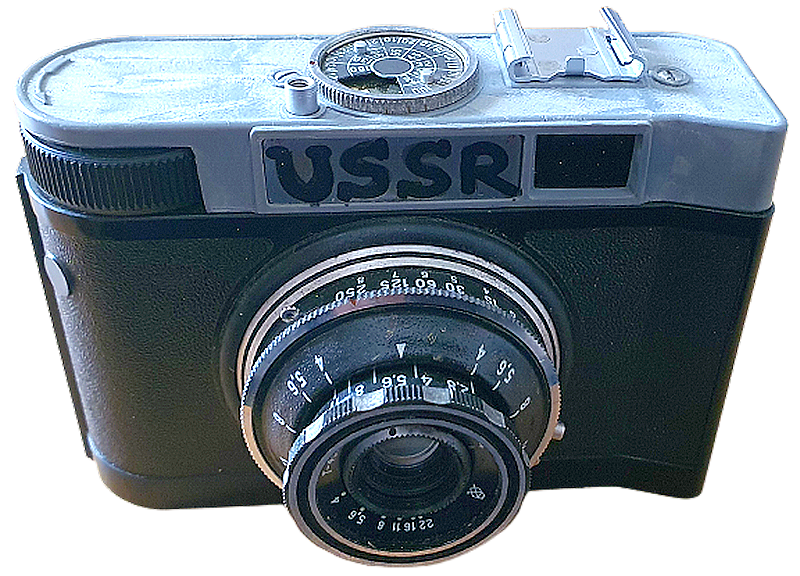This camera, a Russian-made Smena 6, belongs to me, bought it in 1985 or 86, as an upgrade to my first Smena, a no. 5. This camera is so used, that I am afraid it will fall to pieces if I am to use it again. Not really, but it has been heavily used (and abused too). For starters, the front plate is long gone, and I peel it completely like eons ago. Took a marker pen and inscribed USSR on the front of the camera, thought it to be a wise thing. Obviously it was not, for I wish now to not have been doing that at the time. But done is done.
Anyways, took it out of storage a few days ago and got a bit nostalgic over this. Checked the camera, the shutter sounds just about right (not sure of the slow speeds though), the release is all right, aperture ring is good to go, and lens is not fungused and not (very) hazy. The same crappy thing that I knew back in the day, nothing changed.

The focusing element is really mobile, and I remember the focus being out of place because I was touching it by mistake. The lens is a T-43 f4/40, coated (I guess), with apertures from 4 to 22, and the aperture ring is around the lens. Easy to remember, because is similar to the aperture ring on my Zorki 1c.
This Smena model was manufactured in the LOMO factories, between 1961 and 1969, by the million. It was one of the cameras that made photography very popular in the Soviet Union, among others of course. The price was a minute one, and so it was extremely popular and above all, affordable. It was heavily exported in the countries around the USSR, behind the Iron Curtain, and this is why I could buy one in the 80’s Romania.

More technicals about this camera: it uses 35mm. The lens are fixed, cannot be detached, The shutter is of leaf-type, speeds from B to 1/4, 1/15/ 1/30, 1.60, 1/125 and 1/250, with a shutter release button (pre-arming type) on the top plate. Focus is a zone one, from 1 meter to infinity, but most of the times is a wild guess, the focusing ring is not always calibrated. That’s Russian quality control for you.
A self timer is present, as is a flash socket, for those who need flash, together with a cold shoe. The viewfinder is a simple one, no parallax. A reminder disk for film speed is present on the top plate as well; this disk is on the outside (and concentric) to the frame counter. There is no light meter and no battery needed, this camera is as mechanical as they come. The back of the camera detaches from the body, old-style type.
The thing which I love most in this camera is the film advance wheel; large and knurled, it is very simple and easy to use. The main thing I dislike is the need of a take up film canister, as the camera does not have a rewind knob. Or just pop in the film, attach it to a spool, shoot the film and take it out in the dark.
I believe this has something to do with the fact that the old Soviet films came rolled up in paper, not in a cassette or on a spool. The roll of loose film would be put into the left hand recess, and the leader attached to a simple take up spool located on the right hand recess. Shoot the film, and then take out the loaded take up spool. As said, fiddly because none of these operations could be done in daylight, so it had to be done in a dark environment.
